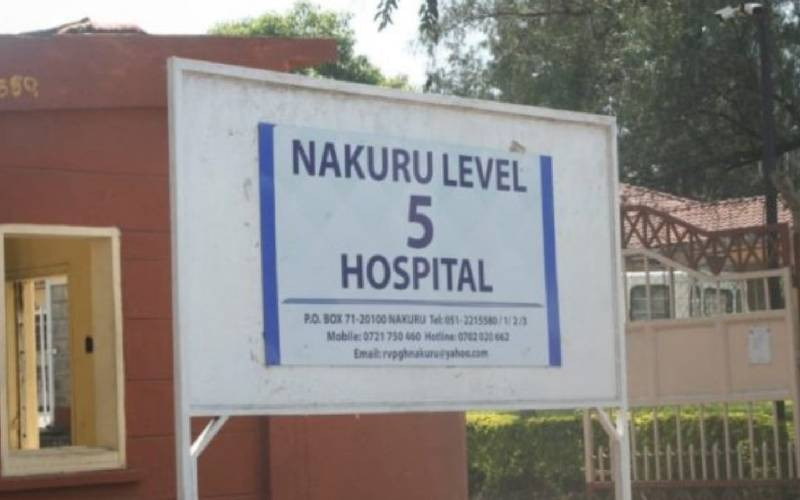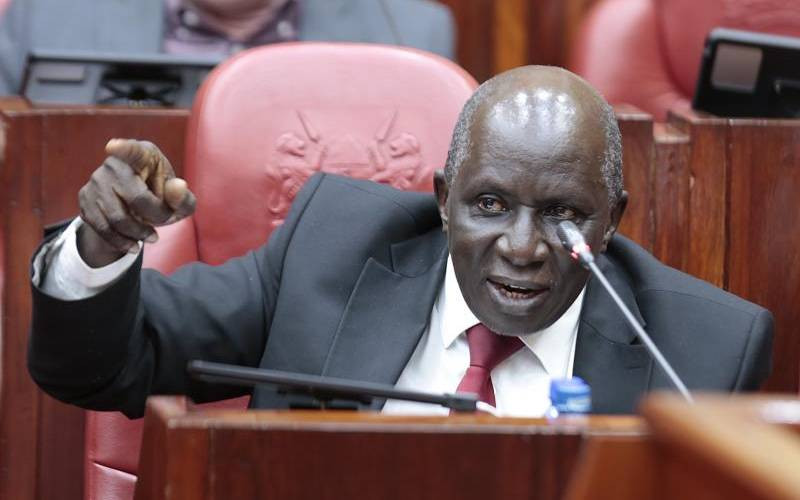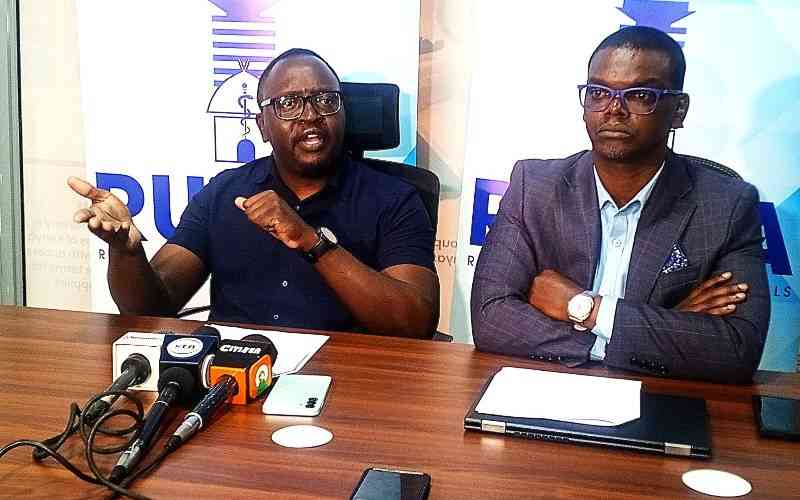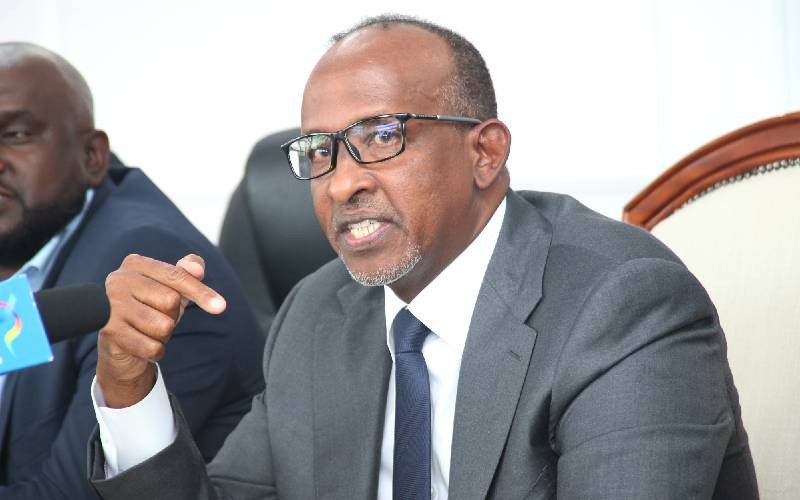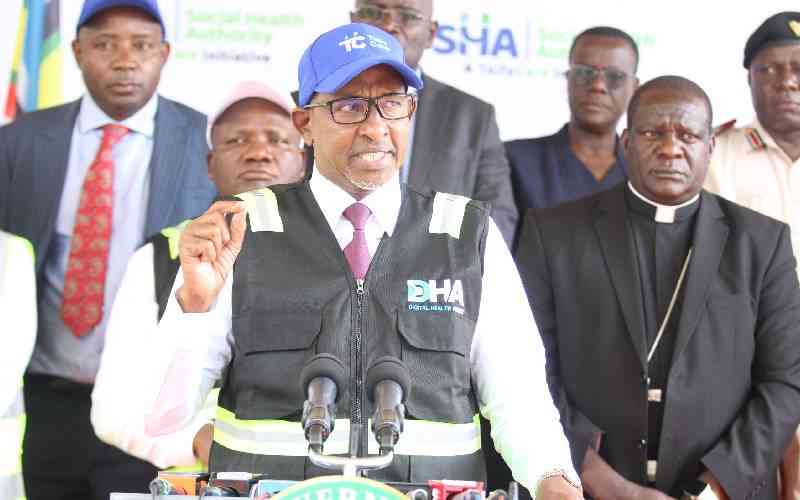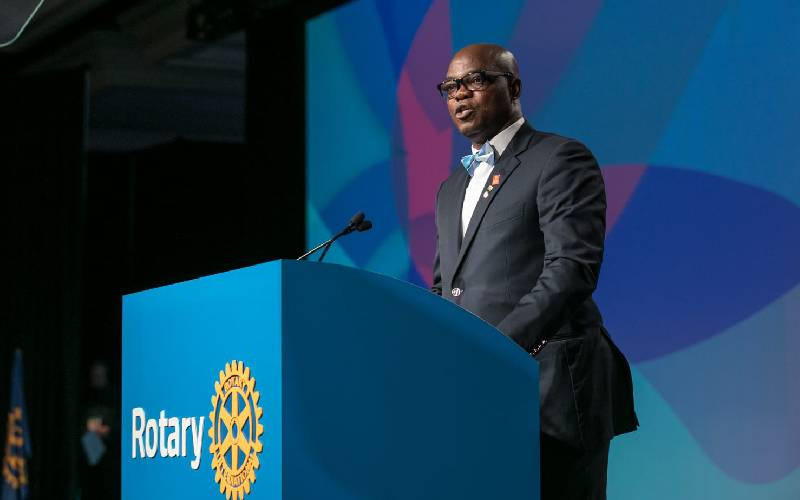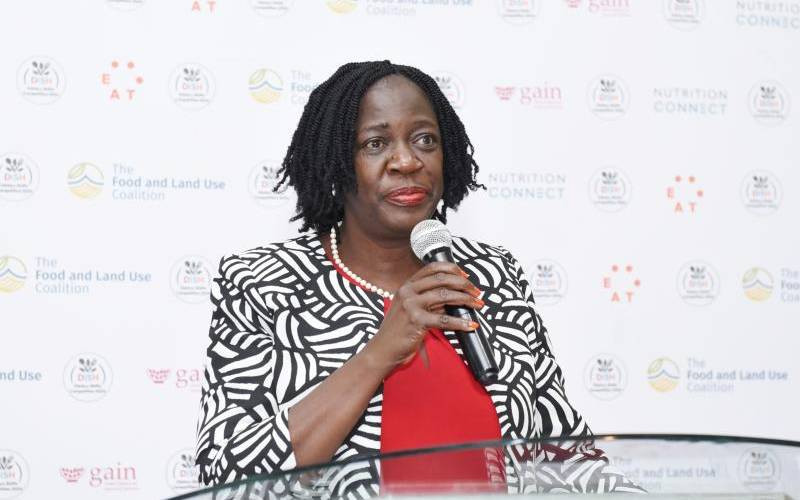
KHRC intern program Keisy Soo, program officer Robert Waweru, program manager Annet Nerima and senior communication officer Ernest Cornel addressing the press. May 6, 2025. [David Gichuru, Standard]
Human rights defenders have petitioned Parliament to allocate more funds for maternal and reproductive health services in a bid to curb unintended pregnancies, unsafe abortions, and related deaths.
Their call follows findings from a recent study indicating that at least 972,694 induced abortions were reported in 2023.
Additionally, the report shows that 355 women die annually for every 10,000 live births due to pregnancy-related complications, many of which are linked to unintended pregnancies.
The findings were published last weekend by the Ministry of Health, the African Population and Health Research Centre (APHRC), and the Guttmacher Institute.
Annette Nerima, Program Manager at the Kenya Human Rights Commission (KHRC), said failure to allocate adequate resources for family planning and other reproductive health services denies women their fundamental right to quality healthcare.
“Parliament has a responsibility to allocate sufficient funds for reproductive health services, especially now that support from the U.S. government has declined,” said Nerima.
She emphasised that the Kenyan government must take greater ownership and prioritise maternal and reproductive health.
- Religious leaders to convene on maternal mortality and cervical cancer in Africa
- Beyond sanitary towels, Kenya needs menstrual leave policy
- State urged to involve youth in sexual and reproductive health decisions
- Help children understand periods
Keep Reading
“While we, as human rights defenders, have participated in the budget-making process, the responsibility now lies with Parliament to ensure adequate resources are allocated,” said Narima.
“We must exhaust every possible avenue to secure funding for maternal and reproductive health. This is the only way to ensure the procurement of essential commodities that save lives.”
Family planning has been a donor funded program since 1967, but in 2021 the Ministry of Health, alongside key donors namely USAID, the Bill and Melinda Gates Foundation (BMGF), and UK Aid, signed a Memorandum of understanding to support family planning commodity security in Kenya with the expectation that the government would fully finance the commodities in 2026.
The agreement required the Government of Kenya to provide matching funds that donors would complement.
While USAID began its support in the 2021/22 financial year under the memorandum, the BMGF withdrew its funding in 2022/23 due government’s failure to remit its committed funds.
While discussions on sustainable financing are ongoing, questions have been raised on whether concrete budget allocations exist.
Data reveals a drastic reduction in Kenya’s budgetary allocation for family planning over the years, even with plans to be self-sustainable by 2026.
For instance, under 2022/23, budgetary allocation for family planning was Sh1.2 billion, which was dropped to Sh500 million, and eventually, no money was disbursed to procure commodities in the same financial year.
In 2023/24 no disbursements were done against the allocation of Sh1 billion and in 2024/25 only Sh150 million has been released to procure family planning commodities, well below the budget allocation of Sh1 billion.
With declining donor support and zero domestic disbursement, health indicators on maternal and child mortality are compromised, the population growth trajectory is affected, economic stability is compromised, and national development is under strain.
On his part, Robert Waweru, KHRC program officer said continued failure to adequately address sexual and reproductive health gaps particularly in the prevention and response to rape and defilement.
“These systematic gaps have contributed to rising cases of teenage pregnancies, increased school drop-outs among girls, and life-threatening maternal complications resulting from unsafe abortions,” said Waweru.
Despite repeated commitments to the constitutional right to the highest attainable standard of health, Kenya's sexual and reproductive health landscape remains marred by neglect, weak accountability, and inadequate investment, they observed.
“The failure of the law enforcement, health institutions and policy actors to respond effectively to rape and defilement has left many young girls pregnant, stigmatised and forced to abandon their education instead of receiving justice and care, survivors are often silenced by cultural taboos, weak legal enforcement, and a health system that is ill-prepared to offer timely, comprehensive post-rape services,” added Waweru.
Additionally, the human rights defenders observed that several teenage girls who become pregnant as a result of rape or defilement are more likely to seek unsafe abortions, face lifelong trauma, or become trapped in cycles of poverty and abuse.
A number of the girls are therefore unable to complete their education, an issue that undermine Kenya’s development goals.
The APHRC report showed that the majority of individuals procuring induced abortions are married women.
Narima attributed the cases to stigma in accessing family planning devices, religious and cultural beliefs that limit access to modern family planning for married women.
“Previously in our work, it has been adolescents, but we fight for rights of all. We have been championing for their rights of education, when they get pregnant during studies, counties haven't put in place avenues.
Sociocultural issues and the same have come to play out when it comes to married women. They therefore haven't been able to come out to access the services,” said Nerima.
Additionally, the human defenders said that abortion is limited, though abortion remains illegal in the country, the lives of those who survive the act must be protected to avoid anticipated deaths.
The study findings showed that married women account for 80 per cent of reported abortion cases in the country.
The primary reasons cited are a lack of desire for additional children, financial pressures, and the pursuit of career goals.
In the survey, done in collaboration with the Ministry of Health and Guttmacher Institute, women aged 24 to 34 accounted for the largest share of abortions (41.8 per cent), followed by those over 35 years old (15.6 per cent) and adolescents under 20 (13.6 per cent).
“Conversation about abortion is contentious because it is illegal, we come in from a rights to life perspective provided by the Constitution. We support the right to life, but we cannot advocate for someone to die just because they have committed abortion,” added Nerima.
Also, present was Arnest Cornel Oduor, communication lead at KHRC is working closely with Community Health Promoters to refer individuals in need of reproductive services to hospitals.
The defenders also petitioned equipping of primary healthcare facilities, the first stop for individuals seeking post abortion care.
The human rights are also pushing for the equipping of low-level hospitals, including dispensaries and health centres, to offer quality maternal, reproductive health, and post abortion care.
Though the facilities are not equipped with human resources and equipment, they are reported to be the first stop for women seeking post abortion care.
The study also revealed that more than half of all women with post-abortion complications received treatment in public health facilities.
“Over the years, we have seen safe abortions, it's through safe abortions that we can save lives. There's a thin line, someone in critical condition,” he said.
In Kenya, family planning is limited to individuals who are above 18 years, according to health policies.
However, adolescents’ access to family planning services is limited, unless they have consent from their parents.
During hospital visits, they are also assessed by healthcare providers to determine whether to provide them with services, like condoms and family planning.
“Awareness should be created on reproductive health services, and have young-friendly centres put in place to serve this age bracket (adolescents and young adults),” said Oduor.
 The Standard Group Plc is a multi-media organization with investments in media
platforms spanning newspaper print
operations, television, radio broadcasting, digital and online services. The
Standard Group is recognized as a
leading multi-media house in Kenya with a key influence in matters of national
and international interest.
The Standard Group Plc is a multi-media organization with investments in media
platforms spanning newspaper print
operations, television, radio broadcasting, digital and online services. The
Standard Group is recognized as a
leading multi-media house in Kenya with a key influence in matters of national
and international interest.

